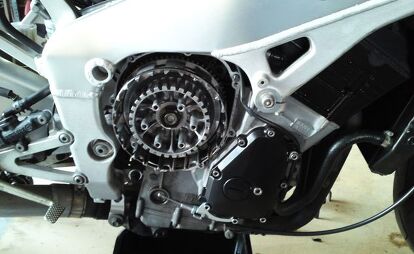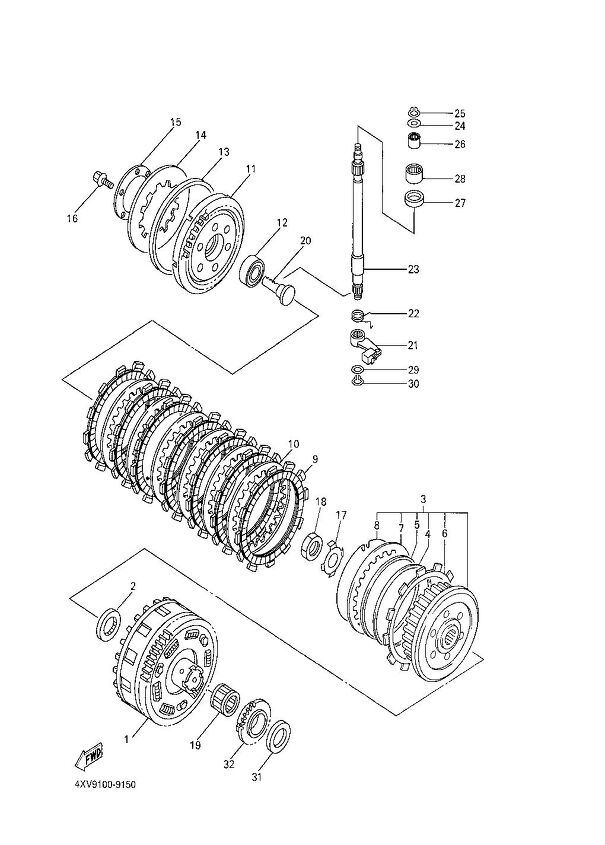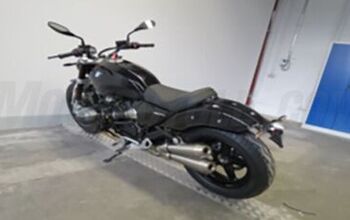Why Does My Motorcycle Clunk When I Shift Into First Gear?
Ask MO Anything: Does my clutch need replacing or adjusting?
Dear MOby,
My new-to-me 2000 R1 clunks really hard when I drop it into first gear in the morning, and it only gets worse after it’s warm. It’s also kind of juddery all the time when I’m leaving from a stop. What’s the problem? The odometer says 18,000 miles.
Not Feeling Fresh
San Diego
Dear Fresh,
Sounds like it might be time for a new clutch, but let’s eliminate a few other possibilities first. Make sure the clutch cable is correctly adjusted so that the clutch is disengaging all the way when you pull in the lever. With the oil warm and the clutch pulled in with the bike in first or second gear, the bike should be easyish to push on level ground.
If your cable adjustment is good, have you changed your oil lately? Sometimes it’s as simple as fresh oil of the proper grade your R1 manual asks for, and don’t just look at the 10W-whatever, look at the letters too; oils labelled MA and MB mean they will work with your R1’s wet clutch. Also, there are tons of people online who claim some of the more expensive motorcycle-specific oils really improve their bike’s shifting.
If none of that helps, you probably just need a new clutch, which in fact means replacing the stack of alternating fiber and steel plates which, when pressed together, transmit power to your rear wheel. They are a wear item, and some riders and usages definitely wear them out faster than others.
Lots of people get away with just replacing the fiber plates (#9 above), and replacing the steel ones (#10) every other clutch job. You can do that if you’re certain the steels are perfectly flat (place them on a piece of glass or granite to ensure they are precisely flat) and if they’re not burnt up/discolored, but maybe you shouldn’t if the bike is new to you. Our man Redpath at MotoGP Werks says a really big clunk when shifting into first often means a warped steel plate, especially if the bike creeps when you rev it with the clutch in and in gear. At 18,000 miles, if money’s not super-tight, you may as well replace the steels too.
According to Yamaha’s fiche, you need seven friction plates and six steel ones. Most places sell them for about $12 each. Get a new clutch cover gasket while you’re at it. If you lean the bike over on its right side a bit before you get to work, you can just leave the new oil you put in there, in there.
If you don’t have a manual, pay attention as you take things apart and put the new discs back in in the same order. You may need a dental pick type tool to pry a plate or two loose since the oil makes them want to stick to each other, but none of this is rocket science.
Oh yeah, soak the new fibers in oil overnight before installation. And good luck.
Recent Ask MO’s:
What are Variable Intake Manifolds?
Is My Motorcycle Engine a Ticking Time Bomb?
Do I Really Have to Change my Oil Every Year?
Send your questions to AskMoAnything@motorcycle.com; send your complaints to 1600 Pennsylvania Ave, Washington, D.C. If we choose to answer your question and get it wrong, consider it a valuable life lesson that’s absolutely free of charge.
More by John Burns
































Comments
Join the conversation
May want to check chain tension as well, sometimes a sloppy chain is part of the "clunking"
"a really big clunk when shifting into first often means a warped steel plate" This is the exact issue on my 2012 Honda NC700X with original clutch with 37K miles. Clutch is about 85% worn from previous original owner. Thanks was wondering about the symptoms of warped steel clutch plates. I'll change them when I replace the clutch friction discs.